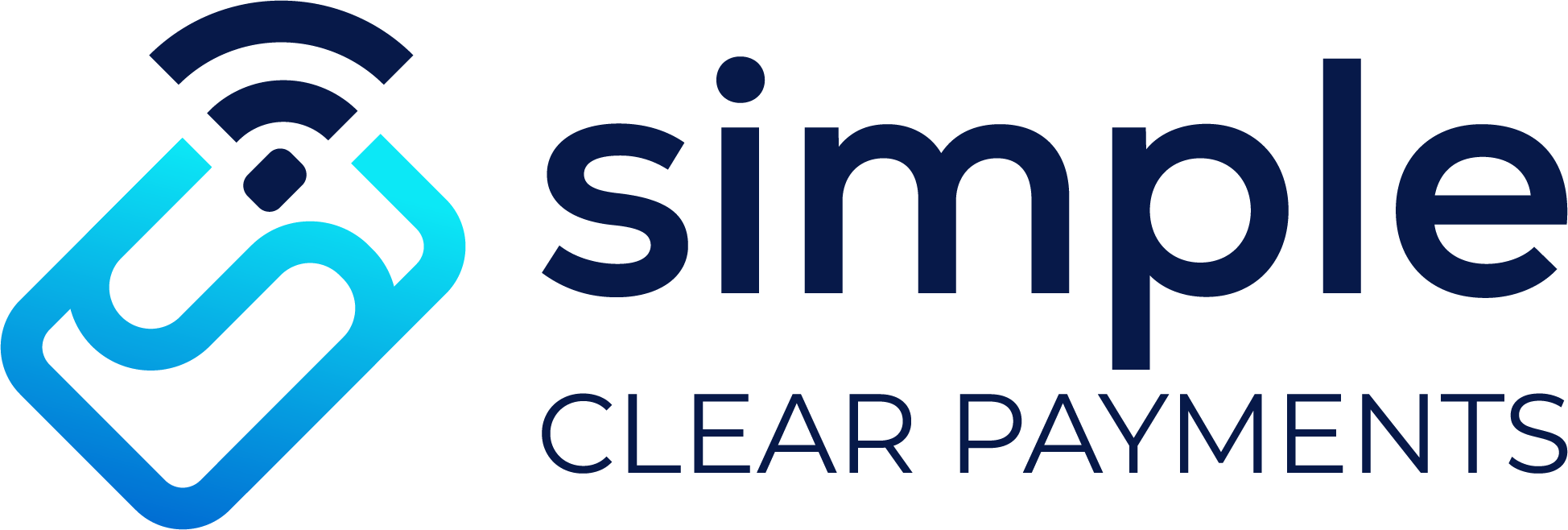
Have questions?
We have answers!
Q: What is Interchange?
Interchange fees are the costs applied to each credit or debit card transaction at your business. These fees are paid to the issuing bank (the customer’s bank) and the acquiring bank (your business’s bank) for processing the payment.
How It Works:
- Customer Transaction: A customer pays using their Visa card.
- Data Exchange: Information flows securely between your point-of-sale system, card networks, and banks to authorize the payment.
- Interchange Fees: A small portion of the transaction amount is allocated to the banks as fees.
- Transaction Completion: Once approved, the payment is processed—usually in seconds.
Why It Matters to Your Business
Interchange fees can significantly impact your profitability. These costs vary based on:
- Card Type: Credit, debit, or rewards cards.
- Transaction Method: In-person, online, or mobile payments.
- Industry: Different industries have specific fee structures.
How Simple Clear Payments Helps You Save
At Simple Clear Payments, we go beyond processing your payments—we actively work to maximize efficiency and savings for your business.
- Ongoing Analysis: We continually monitor your transactions to identify cost-saving opportunities.
- Customized Adjustments: Our team optimizes your payment acceptance strategies to reduce interchange fees.
- Compliance Guaranteed: We ensure you remain fully compliant with Visa regulations and best practices.
Ready to Optimize Your Payments?
Partnering with Simple Clear Payments means you can focus on running your business while we handle the complexities of interchange fees.
Contact us today to discover how we can streamline your payment systems and help you save more.
Let's delve into the world of credit card processing, specifically focusing on Interchange Level II and Level III. For merchants looking to reduce processing costs, understanding these levels can lead to significant savings.
Interchange Level II
Interchange Level II is an enhanced data requirement for business-to-business (B2B) and business-to-government (B2G) transactions. By providing additional information like customer codes or tax amounts, merchants can qualify for reduced interchange rates. This level was designed to encourage more detailed reporting and reduce fraud.
Interchange Level III
Taking it a step further, Interchange Level III involves providing even more detailed transaction data. This can include line-item details of the purchase, such as item descriptions, quantities, and more. This level is especially prevalent in large corporate and government transactions. The rationale? The more information a merchant provides about a transaction, the lower the risk for the card networks, leading to potentially lower processing fees.
Why It Matters
You might wonder, "Why bother with these additional details?" The answer is simple: Savings! By providing more transaction data, merchants can qualify for lower interchange rates, which can translate to significant cost reductions. Especially for merchants with high volumes of B2B or B2G transactions, the savings can be substantial.
For merchants, it's essential to work with a payment processor like Simple Clear Payments that supports Level II and III processing and can guide you through the necessary steps. It's a proactive measure that not only reduces costs but also builds a trustworthy reputation with your transaction partners.
Here's the best part: The Simple Clear Payments team are Interchange experts. Our system uses patented software to extract the necessary transaction data automatically. So for approved businesses, there is no "extra" work to be done when entering new transactions. Businesses enter the same credit card information as usual, and our Simple Clear Virtual Terminal takes care of the rest.
Significantly lower rates with no extra effort! It may sound too good to be true, but it's not. Contact us and we'll be happy to discuss if you're business qualifies for Level II/Level III Interchange rates. By understanding and leveraging Interchange Level II and III, most B2B businesses stand to benefit in a big way. A 15 minute conversation could result in a HUGE fee reduction each month.
Can Simple Clear Payments Integrate with My Website?
Absolutely! Simple Clear Payments can seamlessly integrate with your website to ensure smooth, secure, and reliable payment processing.
The best part? We make it easy for you. Whether you’re using an existing e-commerce platform or a custom-built site, our team will handle the details to get you up and running quickly.
Just contact us at Admin@simpleclearpayments.com, and we’ll take care of the rest—so you can focus on your business while we ensure your online payments work effortlessly.
Simple Clear Payments: Revolutionizing Your QuickBooks Experience with Biller Genie
Are you seeking a solution that can harmonize your business accounting seamlessly? Simple Clear Payments introduces our partnership with Biller Genie, the key to making your payment processing simpler, quicker, and more efficient.
Here's why Biller Genie deserves a place in your toolkit:
- Seamless Integration: Integrate Biller Genie with QuickBooks Online in just a few clicks. This two-way sync ensures any updates in one platform automatically reflect in the other. From creating an invoice in QuickBooks to reconciling payments with Biller Genie, the transition is fluid.
- Time-Saver: Bid farewell to hours of tedious administrative work. Automatically send invoices, dispatch reminders, and reconcile payments within QuickBooks Online. Let Biller Genie be the genie that grants you more hours in your day.
- Cost-Effective: Enjoy lower fees than with Intuit, the processor owned by Quickbooks. Plus, with Simple Clear Payments, you have the opportunity to recoup your credit card processing fees compliant surcharging options.
- Brand Loyalty: Enhance your professionalism with a branded online portal. With Biller Genie, customize the payment portal to showcase your logo and colors, ensuring consistent brand presence. If you use Intuit for invoicing, their branding own branding is far more prominent than your business logo.
- Ditch the Awkward Calls: Stop those cringe-worthy collection calls. Biller Genie sends follow-up emails automatically, whenever an invoice is updated in QuickBooks Online.
- Simple Setup: Dive into a stress-free setup that only takes 15 minutes. It's all about convenience and speed.
- Always Updated: Biller Genie ensures your data is current around the clock. Whether it's customer data, transactions, or invoices, your records remain accurate 24/7.
In today's fast-paced business landscape, efficiency is key. With Simple Clear Payments and Biller Genie, you have a partner that not only understands this but actively works to make your life easier. Upgrade your QuickBooks experience today with Biller Genie and watch your business soar to new heights.
The Surcharging Advantage: Reduce Credit Card Fees to Zero
What is Surcharging?
Surcharging allows merchants to add a small fee to transactions when customers choose to pay with a credit card. This fee helps offset credit card processing costs while keeping cash prices the same.
How Does It Benefit Merchants?
With Simple Clear Payments, surcharging can eliminate your monthly credit card processing fees. You continue accepting credit cards without letting transaction costs eat into your profits.
How Does It Work for Customers?
Customers still have the choice to pay with a credit card or switch to cash to avoid the fee. Transparency ensures they understand the added cost upfront, creating trust and clarity at checkout.
Why Work with Simple Clear Payments?
We specialize in implementing fully compliant surcharging programs. We handle all the details to ensure your setup follows card brand regulations, keeping you compliant while saving money.
Bottom Line:
With Simple Clear Payments, surcharging lets you keep more of what you earn—often reducing your monthly credit card fees to zero. You win by protecting your margins, and customers win with clear, upfront options.
The Dual Pricing Advantage: Reduce Credit Card Fees to Zero
What is Dual Pricing?
Dual Pricing allows merchants to offer two prices: a cash price and a slightly higher card price. With this strategy, businesses can pass credit card processing costs to customers who choose to pay with a card.
How Does It Benefit Merchants?
With Simple Clear Payments, Dual Pricing can eliminate your monthly credit card fees entirely. The card price offsets processing costs, allowing you to accept cards without sacrificing your profits.
How Does It Benefit Customers?
Customers get choice and transparency. They can take advantage of the lower cash price or enjoy the convenience of paying with a credit card at the card price.
Why Work with Simple Clear Payments?
We specialize in implementing fully compliant Dual Pricing models, ensuring clear communication with your customers and alignment with Visa regulations.
Bottom Line:
With Simple Clear Payments, Dual Pricing isn’t just about saving money—it can mean zero monthly credit card fees. Merchants win by protecting their bottom line, and customers win with clear options at checkout.



